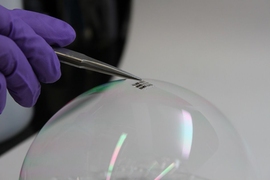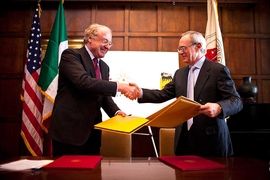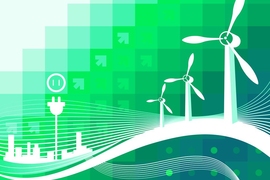Following a stream of research successes in breakthrough technologies in the energy space, MIT President L. Rafael Reif and Eni CEO Claudio Descalzi met on Saturday in Rome, Italy, to renew the nine-year collaboration between the Institute and the Italian energy company for another four years. The $20 million agreement includes an extension of Eni’s founding membership in the MIT Energy Initiative (MITEI) and research support for three of MITEI’s Low-Carbon Energy Centers to advance key technologies for addressing climate change, in the areas of solar energy; energy storage; and carbon capture, utilization, and storage.
The Low-Carbon Energy Centers are a core element of MIT’s Plan for Action on Climate Change, which calls for engagement with industry to address global climate challenges that demand society’s urgent attention. Participation in the centers fits with Eni’s commitment to an energy transition and addressing climate change.
“Addressing climate change and pursuing breakthrough technology research are priorities for Eni. The collaboration with MIT and other European and Italian universities is of paramount importance,” said Claudio Descalzi, Eni’s CEO. “Eni is strongly committed to pursue a strategy of energy transition. This is demonstrated by the challenging targets we have set for carbon dioxide reduction. Since 2008, we have already reduced our direct emissions by 28 percent and we aim by 2025 at a reduction per produced barrel of 43 percent compared with the levels in 2014. MIT, the top academic institution worldwide for breakthrough innovation, is the ideal partner to address research in key technologies that can lead us toward an increasingly cleaner future.”
“At MIT, we are determined to make a better world, and developing new low-carbon energy answers is an important step in that direction,” said Reif. “Our researchers have the ingenuity to invent new materials, technologies, processes, and policies. But for their work to reach the marketplace and make an impact on a global scale, we count on creative partnerships with visionary firms like Eni. We are inspired and grateful that Eni has chosen to sustain this productive collaboration.”
Many of the results to date in the area of solar energy come from research conducted in the Eni-MIT Solar Frontiers Center, established in 2010 at MIT to develop fully competitive solar technologies. Among other achievements, the research has yielded the thinnest, lightest solar cells ever produced — which could be printed on surfaces ranging from fabric to paper — as well as new luminescent materials that could be applied to windows to harness solar power.
MIT and Eni have also worked with Italian university Politecnico di Milano to design and build a full-scale low-cost solar concentrator trough — an important demonstration project for commercializing future concentrated solar power technologies.
The MIT-Eni collaboration has also included development of wearable technologies and systems to improve safety in the workplace, environmental research that has led to new soil assessment methods — which have already been applied in field tests — and advanced modeling of reservoir and petroleum systems.
As part of the continuation of this successful collaboration, Eni and the MIT Energy Initiative have recently begun research programs focused on carbon capture and utilization, energy storage, and uses for natural gas resources that would otherwise be wasted with flaring — with the goal of finding low-cost and industrially scalable technological solutions.











